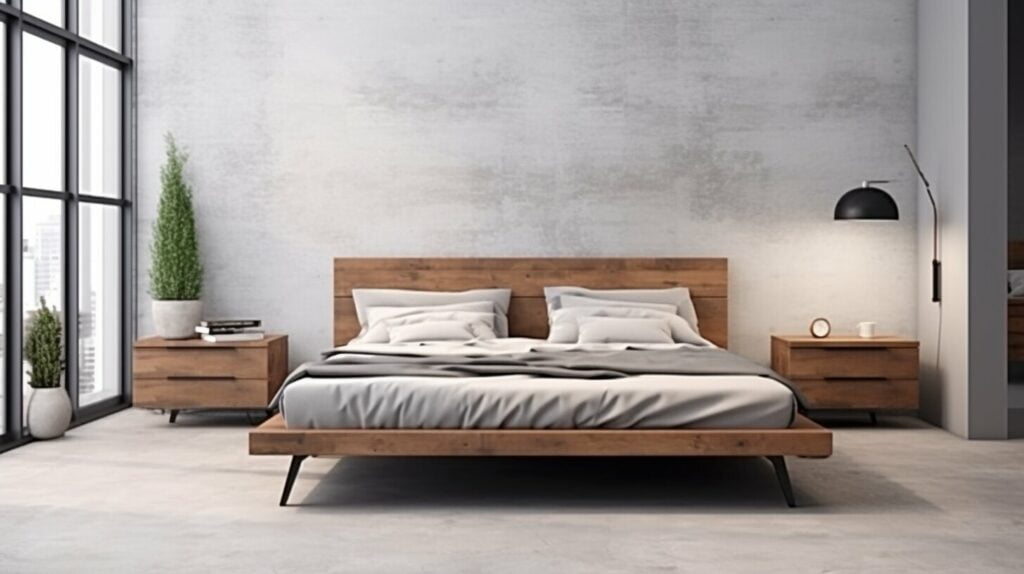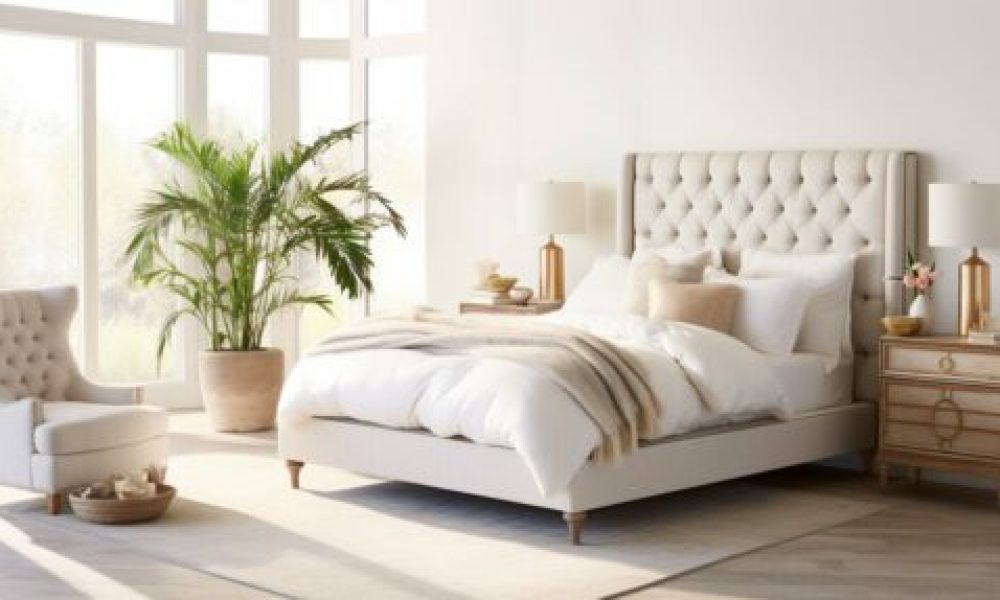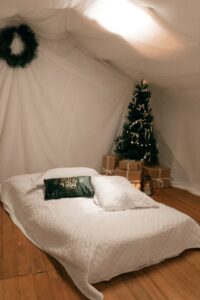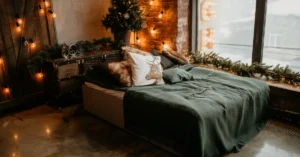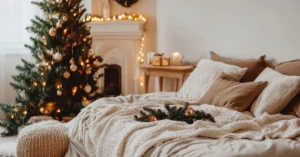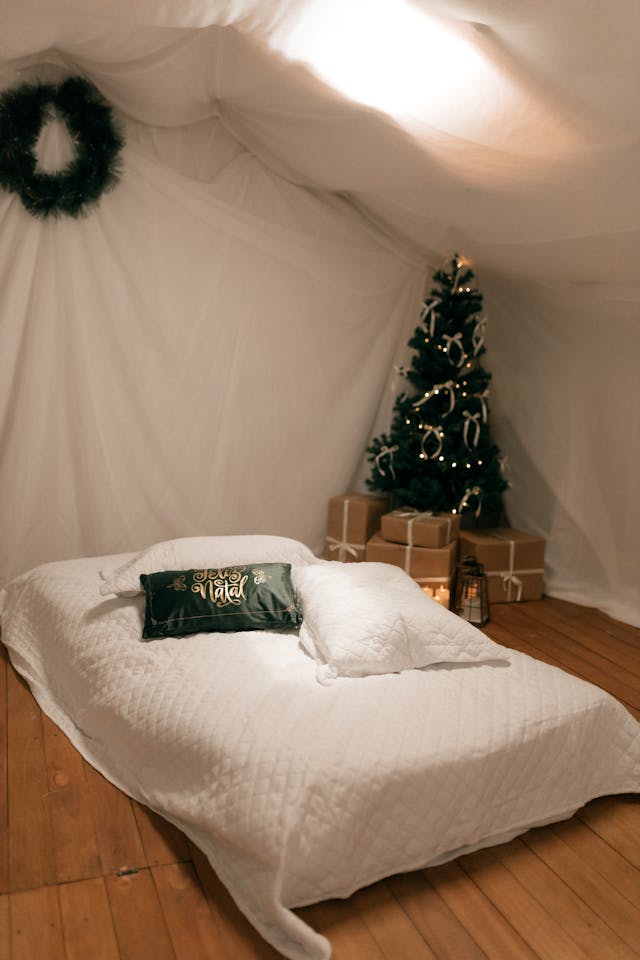Refresh Your Existing Bed Frame
Refreshing your existing bed frame is a smart and stylish way to give your bedroom a new lease on life—without breaking the bank. Whether you’re aiming for a chic new aesthetic or a sustainable furniture makeover, reupholstering and revamping your frame is an approachable DIY that brings big rewards.
Key Takeaways
- Reupholstering is a cost-effective method to refresh your bed frame.
- Choosing durable, easy-to-clean fabric is crucial.
- Reclaimed wood adds character and eco-friendliness.
- Proper preparation and accurate measurements ensure a smooth project.
- DIY upcycling promotes sustainability and personal creativity.
Choosing the Right Upholstery Fabric
Selecting the right upholstery fabric can make or break your bed frame refresh. This choice impacts the look, feel, and longevity of your project. You’ll want a fabric that’s not only attractive but also practical. Ideally, choose materials that resist stains, wear, and are easy to clean—especially if you have pets or kids. When you refresh your existing bed frame, the quality of fabric will determine how well it stands the test of time.
Here are a few popular options:
- Cotton blend: Breathable, soft, and easy to maintain.
- Polyester: Highly durable and resistant to stretching or shrinking.
- Linen: Elegant and breathable, but can wrinkle more easily.
- Velvet: Adds a luxurious touch but requires more care.
When browsing for fabric, also consider your room’s current color scheme and furniture. Matching or complementing your headboard with curtains or cushions can create a cohesive design. If you’re seeking more decor inspiration, check out our guide on cozy bedroom color palettes. For more fabric selection tips, visit The Spruce’s guide to upholstery fabric types.
Summary: The right fabric balances beauty with practicality, so take your time and choose one that suits your lifestyle and decor vision.
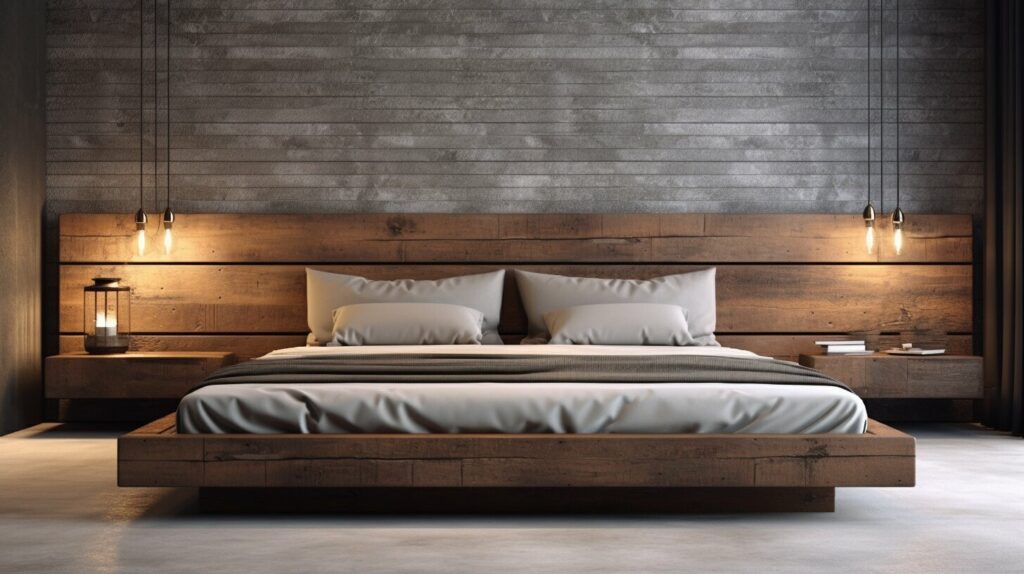
Measuring and Preparing the Frame
Before you staple or stretch any fabric, preparation is essential. Begin by carefully disassembling your bed frame—starting with the mattress and slats. As you dismantle, snap photos or take notes to help guide reassembly.
Use a measuring tape to gather the dimensions of every part: headboard, footboard, and side rails. Always add a few extra inches to each measurement for wrapping and folding the fabric.
Next, clean each component thoroughly with a soft cloth and mild cleaner. Check for damage like splinters, dents, or loose joints. Sand down rough patches and tighten or replace any loose screws or brackets.
This prep ensures your fabric will lay smoothly and stay secure. A well-prepped surface also extends the life of your upholstery job. For more tips, check out Better Homes & Gardens’ upholstery guide.
Summary: Taking accurate measurements and prepping the frame ensures a smoother, longer-lasting result for your DIY project.

Reupholstering the Headboard
The headboard often serves as the focal point of your bed, so reupholstering it offers a huge impact with relatively low effort. Lay your chosen fabric on a clean surface, then place the headboard face-down on top.
Starting at the center, pull the fabric taut and staple it to the back, working outward toward the corners. This technique prevents wrinkles and creates a smooth surface. Staple every 2–3 inches for a secure hold. Trim excess fabric once the main areas are secure.
For added flair, consider tufting, piping, or even adding nailhead trim. These decorative touches elevate the look and add a designer finish to your frame. Reupholstering is a key step when you refresh your existing bed frame for a completely new look.
Need more styling ideas? Visit our collection of DIY headboard inspirations for some creative options.
Summary: A newly upholstered headboard sets the tone for your entire room—it’s the perfect place to express your style and craftsmanship.
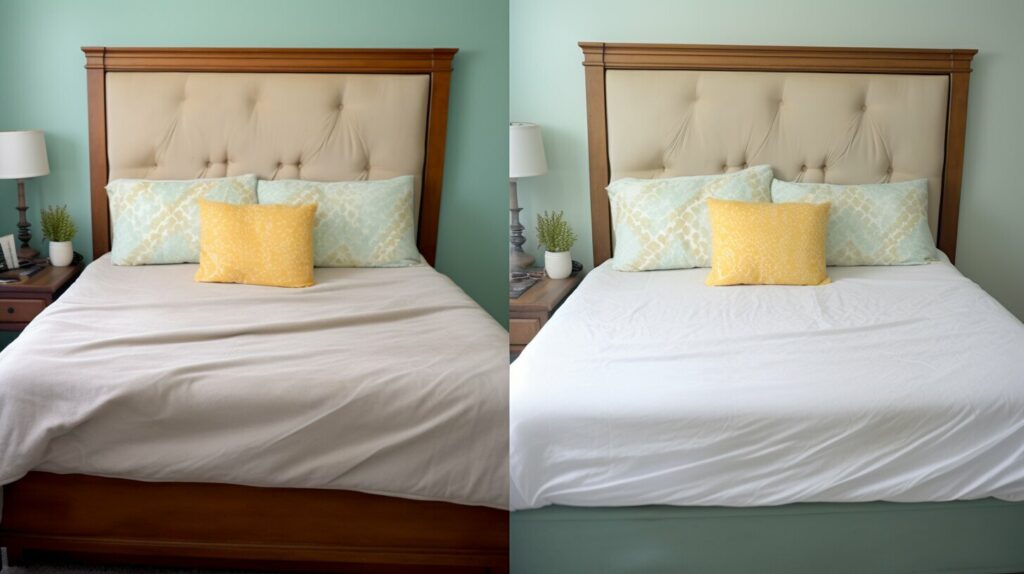
Enjoy Your Sustainable Bedroom Upgrade
Your journey to refresh your existing bed frame isn’t just about style—it’s a step toward sustainability. By upcycling instead of discarding, you reduce waste, save money, and create something that’s uniquely yours. The beauty of deciding to refresh your existing bed frame lies in blending creativity with environmental responsibility.
Consider pairing your new frame with organic mattress options or natural bedding to elevate your eco-conscious choices. Small changes can make a big impact on both your health and the environment. For more sustainable furniture inspiration, explore Treehugger’s sustainable furniture guide.
Summary: Every effort to refresh and reuse helps create a greener, cozier home—while showcasing your creativity and values.
